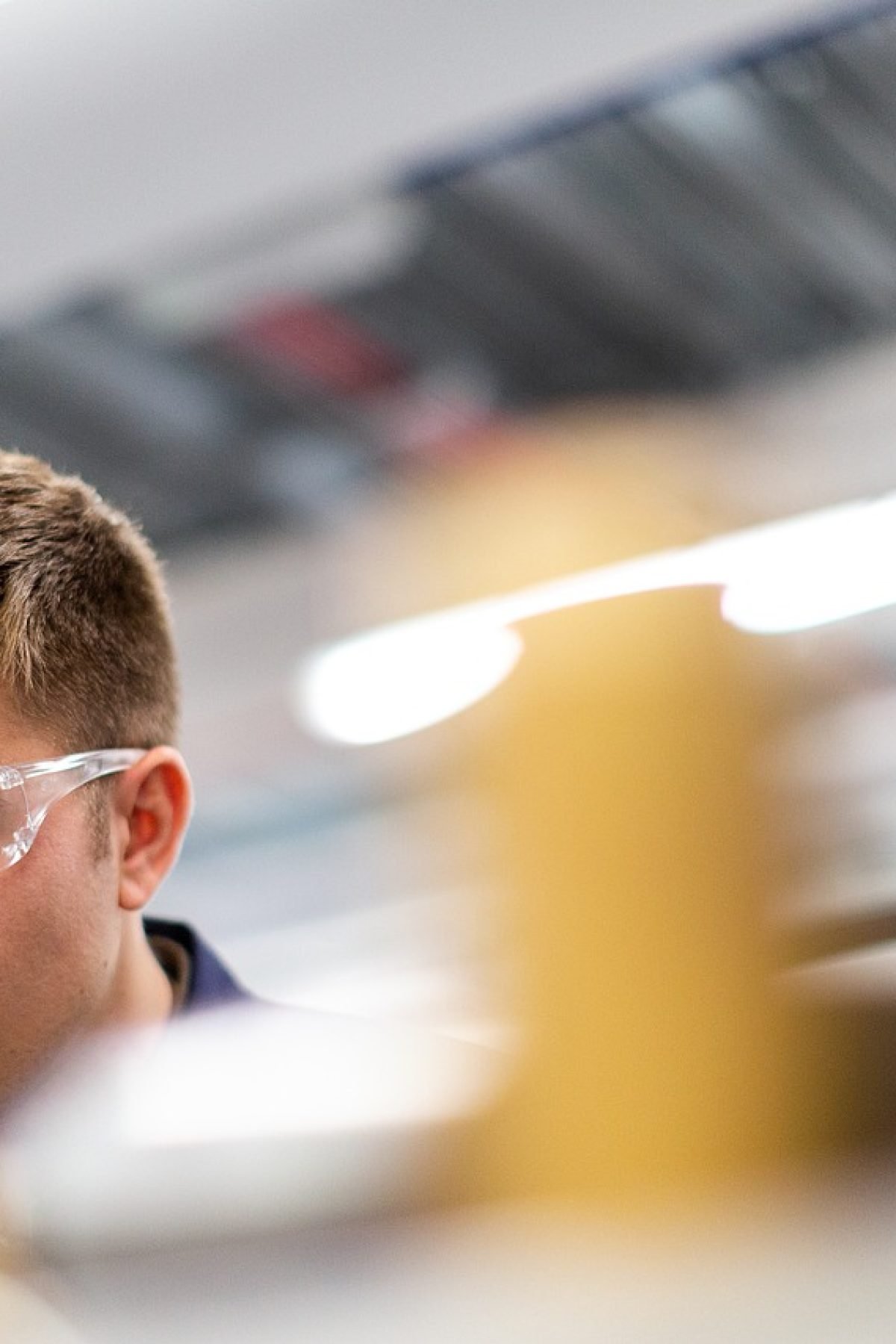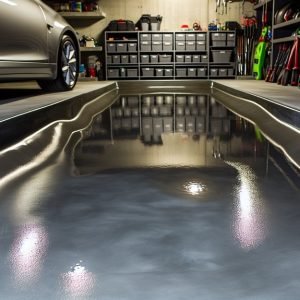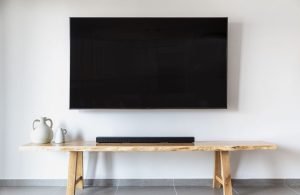Last Updated on November 12, 2025 by teamobn
For many owner-builders and DIY enthusiasts, the workshop is more than just a space — it’s the heart of the home. It’s where projects take shape, repairs are made, and creativity thrives. Yet, despite the attention to tools and layouts, lighting often gets overlooked. The truth is, lighting can make or break the functionality, safety, and efficiency of your workspace.
That’s where commercial-grade LED installations come in. Once exclusive to warehouses and industrial spaces, these high-performance lighting systems are now finding their way into home workshops, garages, and even garden studios — offering professional-grade illumination and energy savings.
Whether you’re assembling furniture, working on a car, or crafting cabinetry, upgrading your workshop with commercial LED lighting can significantly improve your experience and results. Here’s how.
Contents
- 1 1. The Hidden Role of Lighting in Workshop Design
- 2 2. How Commercial LEDs Improve Safety
- 3 3. Boosting Productivity with Better Illumination
- 4 4. Energy Efficiency That Pays Off
- 5 5. Designing Your Workshop Lighting Plan
- 6 6. Durability and Low Maintenance for the Long Haul
- 7 7. Bringing Industrial Quality Home
- 8 Conclusion: Light the Way to a Better Workshop
1. The Hidden Role of Lighting in Workshop Design
Most owner-builders start by focusing on the “big picture” — things like insulation, flooring, or storage systems. But the right lighting is one of the most critical components of a well-designed workspace. Poor lighting leads to mistakes, eye strain, fatigue, and even accidents.
Workshops require task-oriented, high-lumen illumination that ensures clarity and accuracy. Unlike general home lighting, which focuses on ambience, workshop lighting must make surfaces and details visible with minimal shadows.
This is where commercial LED installations excel. Designed for warehouses, manufacturing floors, and large-scale facilities, these lighting systems provide powerful, consistent brightness while maintaining low energy consumption. When adapted to a home workshop, they create a professional-level environment — bright, safe, and efficient.
2. How Commercial LEDs Improve Safety
Safety is non-negotiable in any workspace. From power tools to sharp materials, home workshops are filled with potential hazards. Adequate lighting helps minimize risks by improving visibility and depth perception.
Here are some of the key ways LED lighting contributes to a safer environment:
- Reduced Glare and Shadow: High-quality LED fixtures offer even light distribution, minimizing dark corners and sharp contrasts where hazards might hide.
- Instant-On Brightness: Unlike older fluorescent bulbs, LEDs reach full brightness immediately, so you’re never caught in the dark waiting for the lights to “warm up.”
- Cooler Operation: LEDs emit far less heat than incandescent or halogen bulbs, reducing the risk of overheating — an important factor when working near flammable materials or finishes.
- Longer Lifespan: LEDs last significantly longer, meaning fewer ladder climbs to replace bulbs — a simple but often overlooked safety benefit.
When adapted from warehouse lighting installation projects, these same principles apply beautifully to the home workshop. The same durability, consistency, and safety that protect workers in industrial settings can now protect homeowners in their own creative spaces.
3. Boosting Productivity with Better Illumination
Lighting doesn’t just protect you — it also enhances how effectively you can work. Good lighting improves precision, reduces eye fatigue, and supports longer, more focused work sessions.
Studies in industrial ergonomics consistently show that bright, well-distributed light can improve accuracy and reduce errors. When your workspace is evenly lit, it’s easier to see details — the grain of wood, the alignment of a screw, or the shade of paint.
In a home workshop, this translates to:
- Fewer mistakes when measuring or cutting materials
- Less fatigue during long projects
- Improved accuracy for detail-oriented work like soldering, wiring, or joinery
By installing commercial-grade LED fixtures, you create an environment that supports productivity at every level. Many models even feature adjustable color temperatures — letting you choose cooler light for precision work or warmer light for general tasks.
4. Energy Efficiency That Pays Off
It’s no secret that LED lighting consumes significantly less energy than traditional bulbs — but commercial LEDs take it a step further. Designed to illuminate large spaces like warehouses, these fixtures are optimized for maximum lumen output per watt, meaning you get brighter light for less electricity.
For owner-builders investing in sustainable homes, that’s a major win. You can reduce your energy costs while maintaining professional-quality lighting performance.
Here’s a quick comparison:
- Incandescent bulbs convert only 10% of energy into light — the rest is wasted as heat.
Fluorescent tubes are better, but still inefficient over time due to ballast degradation. - Commercial LEDs maintain brightness with minimal energy use and last up to 50,000 hours or more.
Over time, that means lower maintenance costs and reduced environmental impact.
5. Designing Your Workshop Lighting Plan
Every great workspace begins with a plan. Before you rush to install fixtures, consider how you use your workshop and where lighting will have the most impact.
Here are some tips to guide your layout:
- Layer Your Lighting: Combine ambient lighting (for overall brightness) with task lighting (for workbenches, machines, or tool areas).
- Use Reflective Surfaces: Bright walls and ceilings can help distribute light more evenly.
- Eliminate Shadows: Position fixtures directly above work surfaces to avoid casting shadows.
- Consider Color Temperature: Choose cooler white light (4000K–5000K) for precise tasks; warmer light for casual areas.
- Plan for Future Growth: If you add more tools or expand your workspace, leave flexibility in your wiring and fixture placement.
For larger or more complex workshops, partnering with lighting professionals — like the experts at The Safety Source LLC — ensures your setup meets both safety and performance standards.
6. Durability and Low Maintenance for the Long Haul
Workshops aren’t gentle environments. Between dust, vibration, and fluctuating temperatures, lighting fixtures must withstand tough conditions. Commercial LEDs are engineered for exactly that — providing rugged reliability without the maintenance headaches of traditional bulbs.
Many commercial fixtures are IP-rated, meaning they’re resistant to dust and moisture — ideal for garages or sheds that aren’t fully climate-controlled. Combined with solid-state technology (no fragile filaments or glass tubes), they offer peace of mind that your lighting will perform for years to come.
7. Bringing Industrial Quality Home
What makes commercial lighting so appealing for homeowners is its adaptability. Today’s LEDs come in sleek, compact designs that fit seamlessly into residential spaces — offering professional-grade performance without an industrial look.
By integrating commercial LED systems into your home workshop, you’re essentially bringing industrial quality home. You gain the benefits of efficiency, reliability, and precision — all while creating a workspace that inspires creativity and productivity.
Conclusion: Light the Way to a Better Workshop
Your workshop is more than just four walls and a workbench — it’s a space where ideas become reality. Investing in proper lighting isn’t just about brightness; it’s about safety, precision, and comfort.
By learning from commercial LED installations, you can design a workshop that’s safer, more productive, and energy-efficient — a place where you can work longer, smarter, and with greater confidence.
When you’re ready to elevate your workspace, turn to experts in lighting solutions for peak performance and safety. After all, better lighting doesn’t just illuminate your work — it elevates it.






